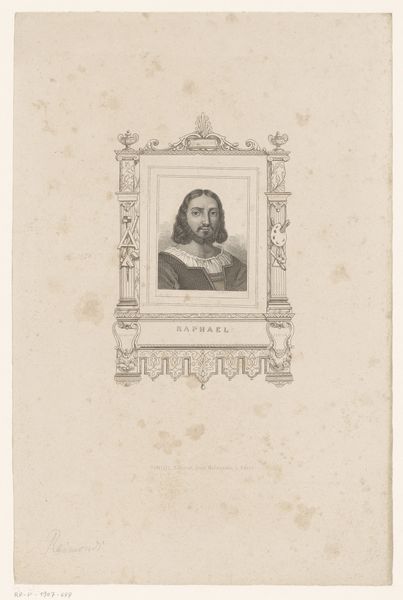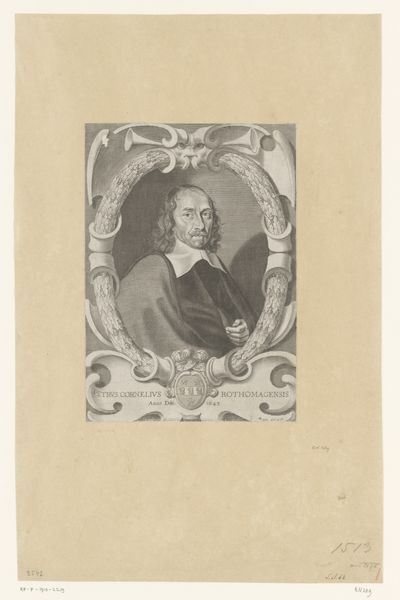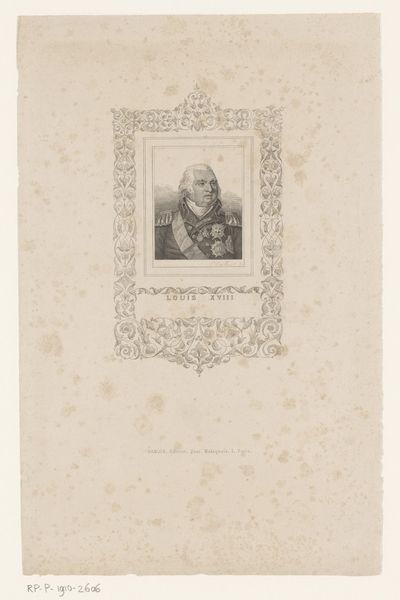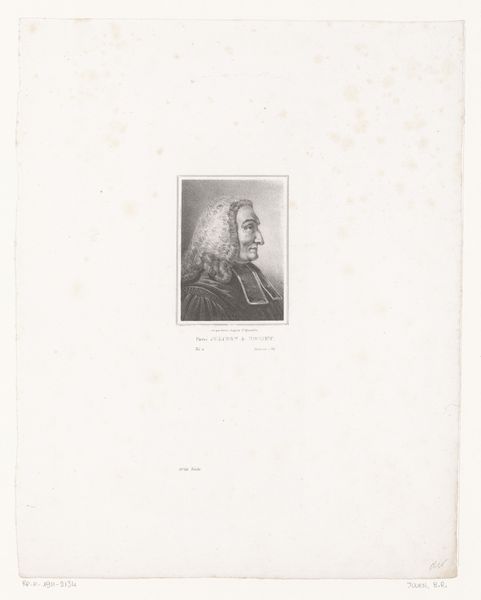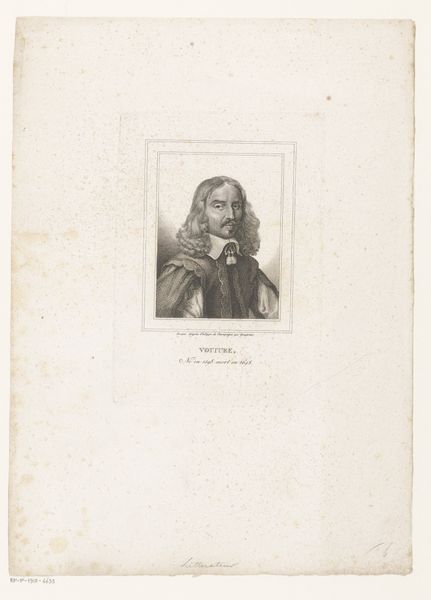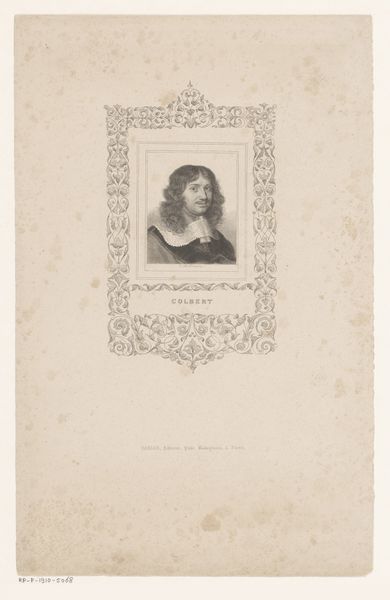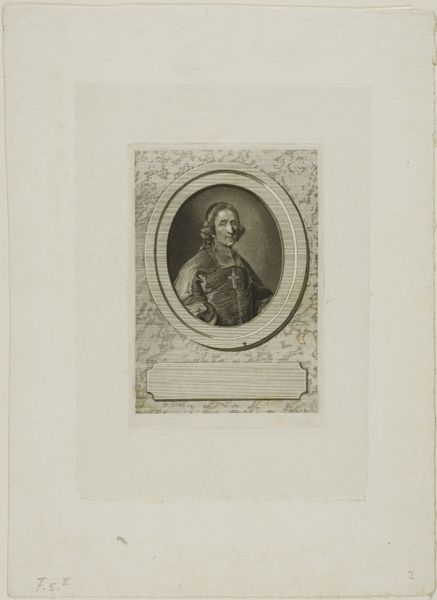
drawing, print, etching, engraving
#
portrait
#
drawing
#
neoclacissism
# print
#
etching
#
engraving
Dimensions: Image (portrait and frame): 4 in. × 7 1/16 in. (10.2 × 18 cm) Sheet: 10 5/8 × 6 7/8 in. (27 × 17.5 cm)
Copyright: Public Domain
Curator: Here we have a rather interesting piece: a "Portrait of Benjamin Franklin." It's an etching and engraving dating between 1780 and 1820, currently held at the Metropolitan Museum of Art. Editor: It strikes me immediately as…stately, almost severe, even in its small scale. There’s an incredible precision in the rendering, everything tightly controlled within that ornamental frame. Curator: Indeed. The frame is a crucial structural component, mediating the viewer's encounter with Franklin. The repetitive foliate designs create a sense of order and containment, reflecting Neoclassical principles. Note how the frame seems almost weightless in contrast with the darker area of the portrait. Editor: The floral ornamentation speaks volumes. These weren’t randomly chosen motifs. They serve as visual cues—symbols of knowledge, wisdom, perhaps even prosperity, all framing Franklin as a virtuous, almost deified figure. This echoes classical busts of prominent philosophers. Curator: I agree. Consider, too, the careful articulation of light and shadow on Franklin’s face. The artist uses the engraving technique to define his character through chiaroscuro, giving him a gravity and a depth which serves the overall symmetry of the portrait, reinforcing the Neoclassical form. Editor: Beyond pure aesthetics, think of what Franklin represented at this moment. The image, through symbolic encoding, solidified his legacy during a formative period in American identity. This wasn’t simply a likeness, but a carefully constructed symbol for future generations. A deliberate attempt to build memory and inspire. Curator: From a formalist perspective, the tension between the delicacy of the engraving and the implied solidity of the subject matter is also important, establishing a powerful contrast within a unified composition. It reflects a period where control and elegance in visual representation reigned supreme. Editor: Precisely, and this resonates far beyond its purely visual attributes, providing layers of interpretation for how we remember prominent individuals through constructed visual narratives. It’s both personal and deeply intertwined with larger cultural aspirations. Curator: Ultimately, this "Portrait of Benjamin Franklin" shows us how careful consideration of the art object reveals the interconnectedness of intention, skill, and period aesthetic. Editor: And how potent visual language is in shaping both individual reputations and broader cultural memories.
Comments
No comments
Be the first to comment and join the conversation on the ultimate creative platform.


